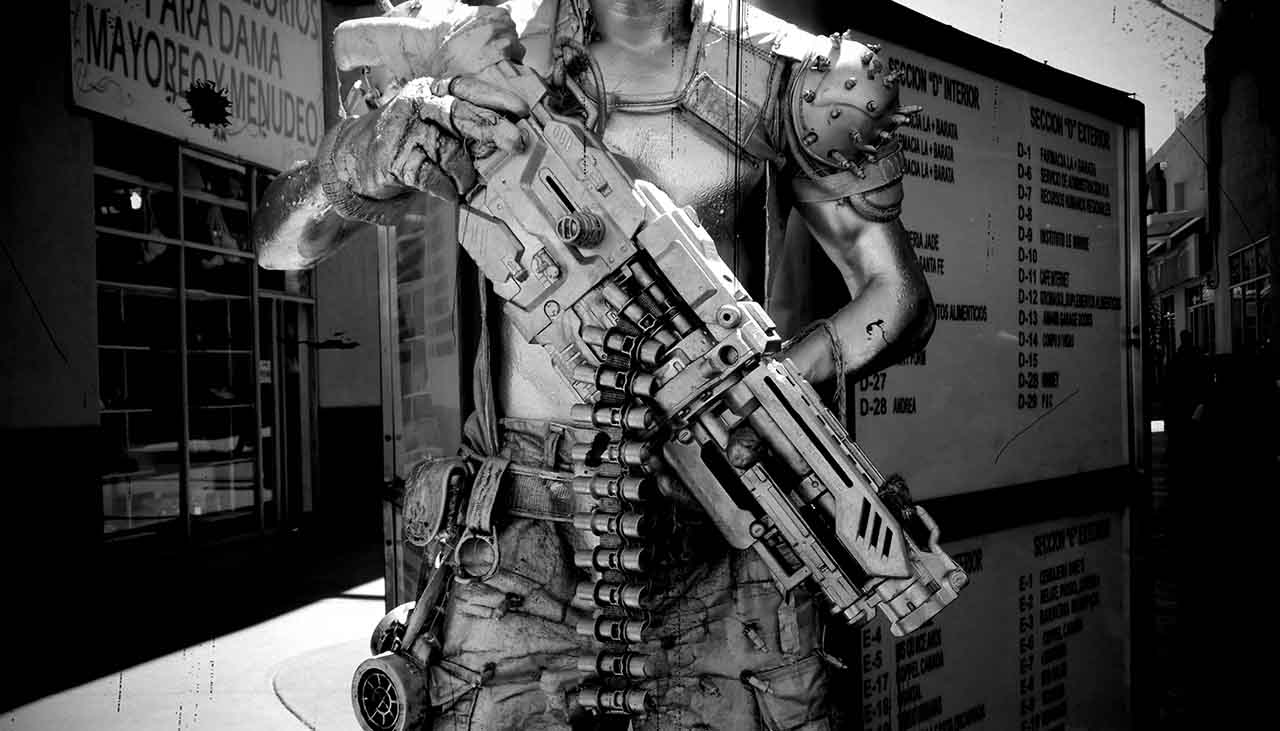For centuries, weapons have been evolving to better serve their users and defend the people of our world. From rapiers and muskets to drones, landmines, and machine guns – what can be created with modern technology is virtually limitless. But just how advanced are contemporary weapons? The best way to find out is by attending a major arms exhibition – so come along with us as we take an exclusive tour into one of the largest events in the field of military hardware: The Future of Weapons Technology Exhibition! Here you’ll sample some of the most impressive devices and cutting-edge science being used today, including robotics, autonomous combat systems, specialized ballistic tools, and sensor networks. Walking through stalls manned by experts from all over the globe will give you a glimpse at just how far weaponized tech has gone over time. See what it means to truly master defense – learn about real advancements in weapons mechanics while gaining an understanding of who stands where against which worrisome ammunition use cases that were becoming concerns for certain regions around the globe lately. So join us as we explore this industry together – share your thoughts on emerging technologies lead societies forward or close them off. Let’s dig deep into this fascinating topic!
Overview of the world’s largest arms exhibition and its impact on the global weapons technology landscape
The Future of Weapons Technology Exhibition is one of the world’s largest arms shows, and it offers an annual platform for military technology experts to display their latest innovations. This exhibition brings together leading manufacturers, scientists, and policymakers from all over the globe to discuss the future of weapons technology. It serves as a major source of information about emerging trends and advancements in defense technologies, such as 3D printing, robotics, artificial intelligence, biometrics, and more. By presenting these cutting-edge developments alongside established weapons systems, this event provides valuable insight into how weaponized tech will shape global security strategies in years to come.
Overview of emerging technologies showcased at the exhibit and how they could revolutionize weapons production
At The Future of Weapons Technology Exhibition, visitors have the opportunity to get hands-on with some of the most advanced military technologies. Attendees can try out drones, autonomous combat systems, specialized ballistic tools, and sensor networks – all of which could revolutionize weapons production. 3D printing has drastically changed how we produce weapons components by allowing manufacturers to build complex parts quickly and cheaply. Robotics has also become increasingly popular in recent years, as they enable users to better control their devices remotely and over great distances. Artificial intelligence is another key area of interest at this show, as it offers promise for automating certain processes within weapon production, potentially reducing costs and increasing efficiency.
Discussion of new trends and innovations in weapon technology including 3D printing, robotics, artificial intelligence, and more
At The Future of Weapons Technology Exhibition, visitors can explore the latest trends and innovations in weapon technology. 3D printing has emerged as a powerful tool for producing highly complex components quickly and economically. Robotics has become an integral part of weapons production, allowing users to control devices over long distances with precision and accuracy. Artificial Intelligence (AI) offers immense potential for automating certain aspects of weapon production, creating new opportunities for cost savings and efficiency. Other emerging technologies such as biometrics are also being explored at this show, offering promise for increased security measures on weapons systems.
Analysis of the implications of these developments for security, warfare, and peacekeeping operations
The advancements in weaponry discussed at The Future of Weapons Technology Exhibition could have far-reaching implications for global security. The increased use of 3D printing, robotics, and AI in weapon production could reduce costs associated with arms manufacturing, making it easier for countries to build up their arsenals. This could potentially lead to an arms race between various nations, heightening tensions and instigating further conflicts. In addition, the adoption of advanced technologies opens up new avenues for offensive warfare tactics as well as defensive measures that may not be available using traditional weapons systems. Finally, emerging technologies such as biometrics present opportunities for improved data security on weapons systems but can also raise concerns about privacy rights when implemented by authoritarian regimes.
A look at the growing role of emerging technologies in the arms industry and their potential implications
Emerging technologies are playing an increasingly important role in the global arms industry. This is evident by the sheer number of new developments being showcased at The Future of Weapons Technology Exhibition. 3D printing, robotics, and AI are just some of the technologies driving this revolution, offering potential cost savings in production and increased accuracy in combat operations. However, these changes also carry with them certain implications for international security. The rise of autonomous weaponry, for example, could potentially lead to more aggressive use of force while advanced surveillance systems might infringe on privacy rights. It remains to be seen if these developments will ultimately result in greater stability or greater insecurity around the world. Nevertheless, emerging technologies have become a major factor shaping our understanding of warfare.



